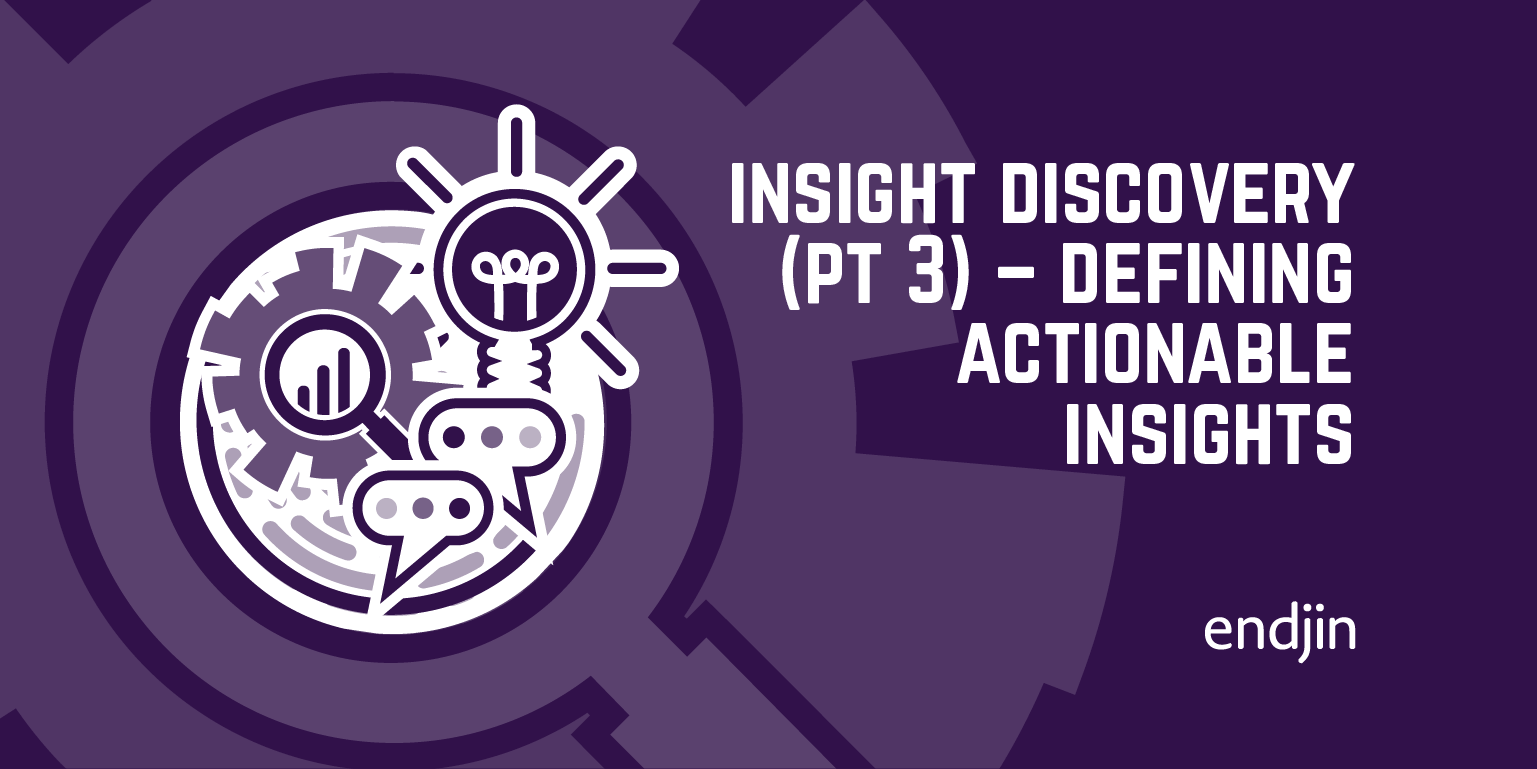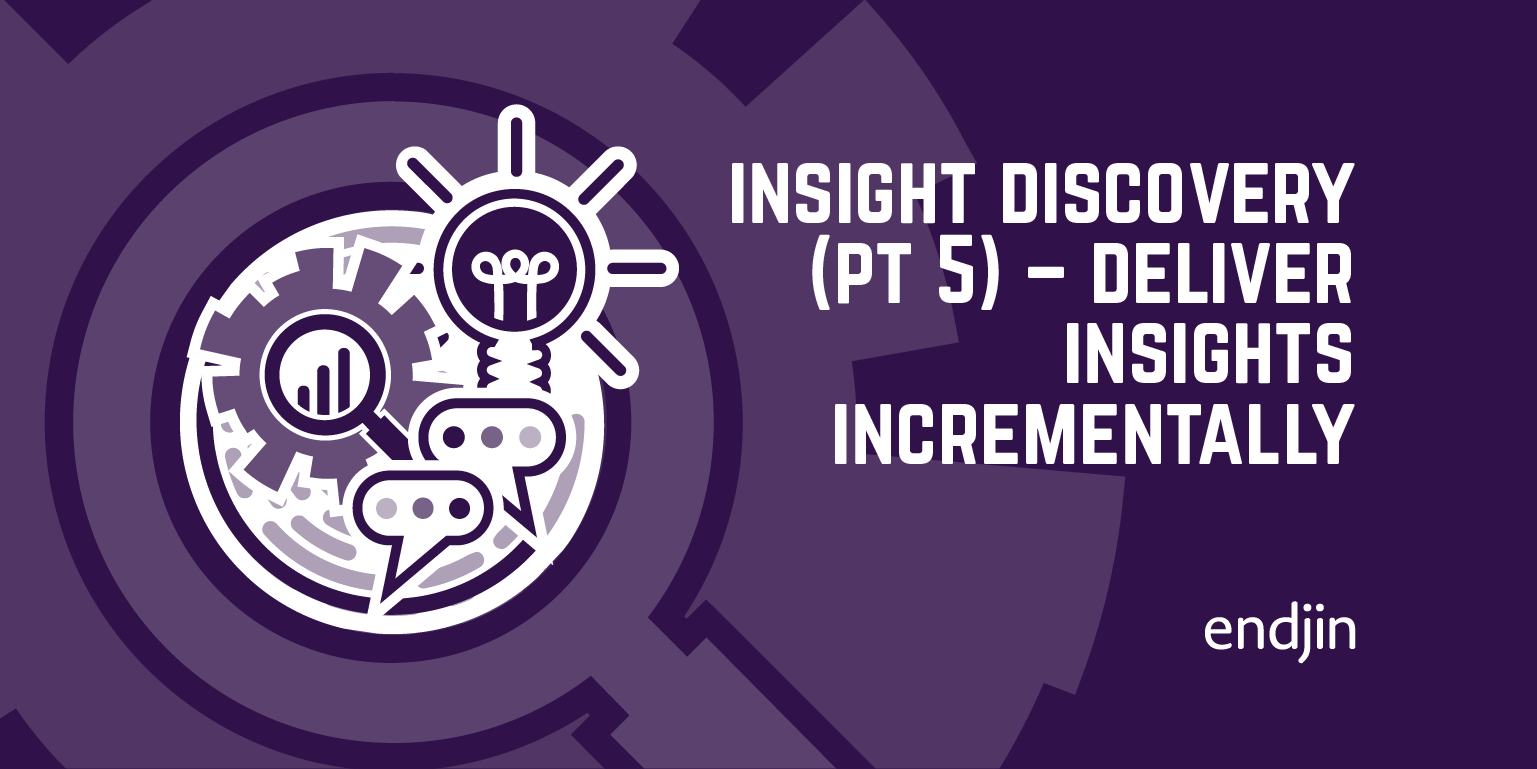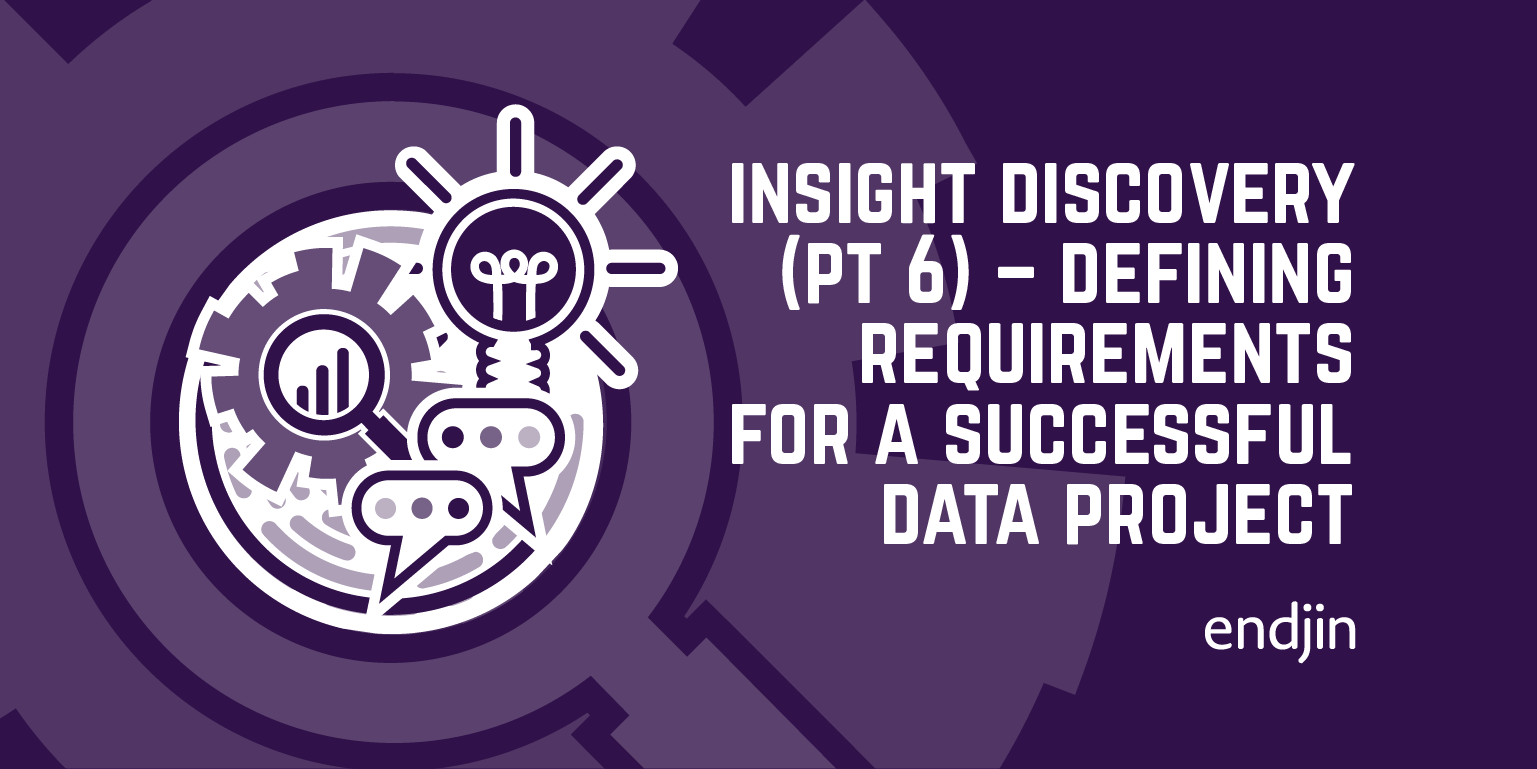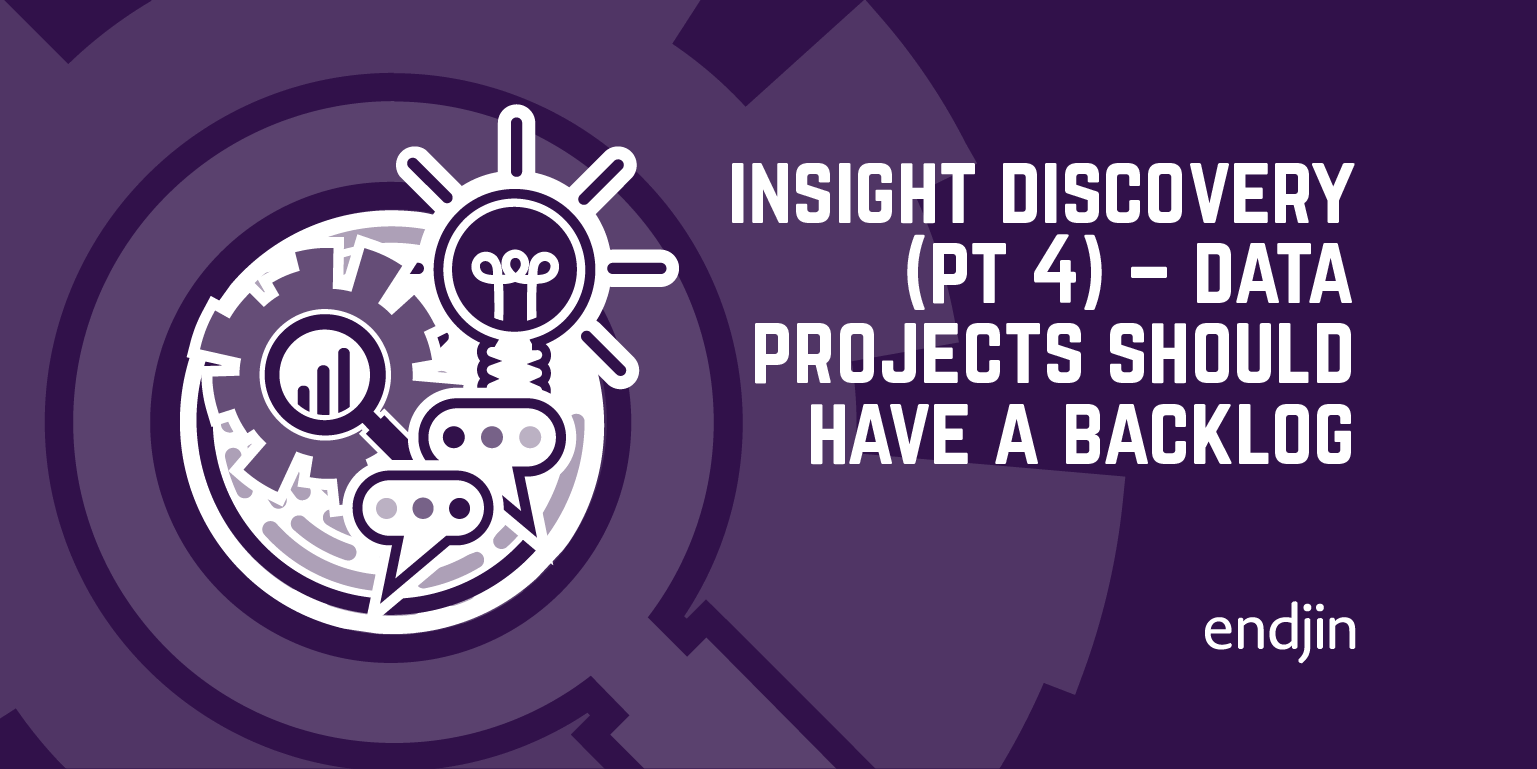Insight Discovery (part 3) – Defining Actionable Insights

TLDR; The traditional, bottom-up, data modelling approach to data warehousing leads to compromised data platforms that are hard to evolve, expensive to run, and don't meet the needs of the business. Endjin's Insight Discovery process helps you to ask the right questions of the business, so that you can design a data platform that fully meets their needs.
Insight Discovery
This series of posts, and the process that they describe, will help you ensure that your data projects are successful. That the time, money and energy that you or your organisations are investing in strategic data initiatives are well spent and that they deliver real business value.
They describe a different way of thinking, a shift in mindset, in how to approach data projects, that puts the consumer and the outputs front and centre of the process.
In the previous post in the series, I argued that for our data projects to be successful, we should start by forgetting about the data. Instead, we should work top-down - starting with business objectives and goals, and then identifying the decisions and actions that can be taken towards achieving them.
I this post, I'll describe the next step in the Insight Discovery process - exploring the actions, and defining the insights that are needed to know whether to, or when to, take the action.
Make insights actionable
In the previous post, I explored a use-case around a call center manager trying to influence an overarching business goal of improving customer satisfaction. I identified a specific action that they could take that would have an impact, which was to increase the team size for a shift if the phones queues were busier than expected. By increasing the team size, they would lower the call queue times, keeping customers happier in the process.
So, now that we have an action, we need to define the insights that will help people know whether to, or when to, take the action.
A good way to think about this is to think about the questions that you might ask. In the case of the call centre manager this might be:
- How busy are we now?
- How busy are we likely to be tomorrow?
- What would the optimal team size be?
The questions help us understand what evidence we need in order to provide the insight that could help the call centre manager with the decision around staffing the next shift.
What evidence could we use to answer these questions? There's some obvious ones like:
- The length of the call queue
- The number of issues we're resolving per hour
But we could also look at:
- Historic seasonality patterns - are there any external factors at play?
- Or known / planned maintenance events that might impact the service, causing people to call up?
And what about more qualitative things like:
- The sentiment of the customers when they get through to speak to someone - are they happy or angry?
This is all evidence that we could use to help answer the questions, which in turn helps us to decide whether or when to take the action.
We've moved away from the data, and started talking about actionable insights. If our data platform can deliver this, we already know that it's going to be valuable.
A recap:
- We've defined the business goal
- We've identified the audience that can influence it
- We've captured the specific actions that could be performed
- And we've captured the evidence that could be used to support the decision making
But an actionable insight doesn't stop there. There's a couple more things that we need to know.
What kind of notification do we need? Does this insight need to be delivered in real time, daily, monthly? And through what channel? People always default to some kind of dashboard or report, but that's not the only option - what about an SMS or email notification? Or an integration into another application? What is the most effective notification mechanism for the audience?
And finally, what feedback loop do we need to make sure that the action had the effect we wanted? How can we tell that we're moving in the right direction towards our goals?
If we repeat this process for the different types of audience, for the different actions, and the different types of evidence, we've started to build out a backlog of actionable insights.
And that leads us to another mindset shift around data projects - that you can and should have a delivery backlog for your data platform, that's broken down into a series of discrete actionable insights. With that, you can now report progress and prioritise accordingly just like any other delivery project.




